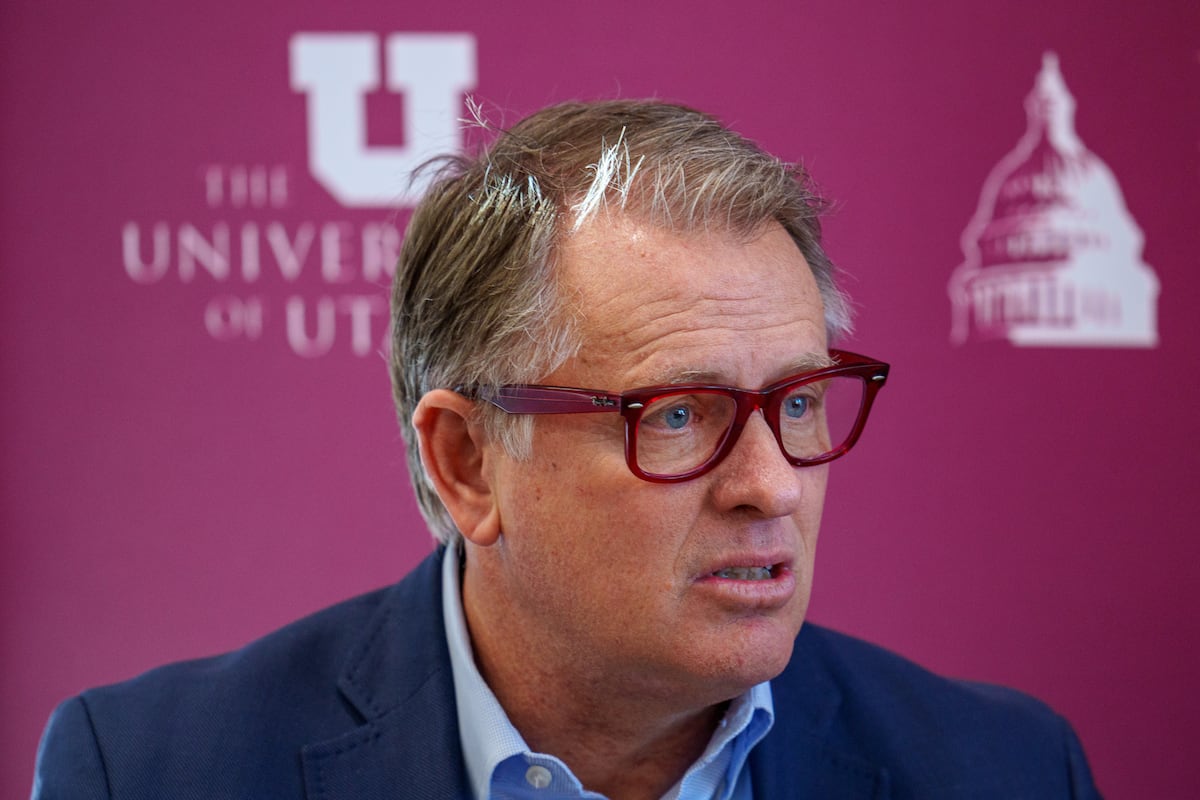It was a bruising legislative session this year for public higher education in the state — but U. of Utah President Taylor Randall said he’s come to feel it was ultimately “fair” for lawmakers to …

It was a bruising legislative session this year for public higher education in the state. But University of Utah President Taylor Randall said he’s come to feel it was ultimately “fair” for lawmakers to scrutinize the budgets of each school.
“I think it’s a fair question from legislative leaders to ask how we are spending,” Randall told The Salt Lake Tribune’s editorial board Thursday about his rosy hindsight.
This March, the Utah Legislature passed a measure to cut the budgets of the state’s eight institutions of higher education by a combined $60.5 million. The U.’s share of that was the largest, at $19.6 million.
Schools were told to cut “inefficient” academic programs by looking at which have low enrollment, lead to few graduates or result in lower-paying jobs.
Each institution then has a chance to earn its share of the money back by presenting “reallocation” plans. In those, they must show how the funds would be reinvested in degrees that lead to high-wage jobs the state needs. Legislators have specifically pointed to engineering, business and nursing.
The legislative executive appropriations committee is expected to hear the final presentations and vote next month.
Randall said he heard “harsh rhetoric from all ends” during the session and while ultimately drafting the U.’s plans. The flagship institution is cutting 81 academic programs that have the fewest students. Most came from the humanities, which lost 22 degrees and certificates. Most were around languages or language teaching, such as a German-teaching bachelor’s degree. (Similarly, chemistry and biology teaching degrees in the College of Science were cut.)
Another eight program cuts are in the College of Fine Arts, including a Ph.D. in theater and master’s degrees in ballet and modern dance. Seven cuts affect the College of Social and Behavioral Science.
Many faculty had been fearful that the liberal arts would be on the chopping block based on the metrics schools were instructed to look at.
Randall said he “didn’t get the message” that the Legislature was specifically targeting the arts and social sciences — though some lawmakers said that’s what the bills seemed to suggest.
(Francisco Kjolseth | The Salt Lake Tribune) The Languages & Communication building at the University of Utah is pictured on Tuesday, Dec. 10, 2024.
The U., he added, has plans to bolster some of those general-education offerings that all students, regardless of major, are required to take to graduate. The focus on the new additions, he said, will be civic engagement and dialogue.
“Those are also outcomes we want from college,” he said. “We want great citizens.”
Lawmakers, he added, have “multiple opinions” but they also want the same thing.
“Behind the scenes, there was a lot of dialogue,” he said. “I personally give the Legislature a lot of credit for that.”
At the end of the day, Randall said, “I think we found a very reasonable compromise.” He believes the U. is “better” because of the cut and reallocation.
Other leaders of Utah’s public colleges and universities have made similar positive remarks about the outcome.
U. Provost Mitzi Montoya, who joined the editorial board discussion, said the university does push to get students who graduate “into as high-paying jobs as we can support them in.”
The median salary for college graduates in the state, she and Randall noted, is $49,000. At the U., according to self-reported numbers, it’s $66,000.
“It’s true we’re going to invest in areas where we see employer demands and student demands,” she said, also citing business and engineering as areas the U. has said in its initial plans will be areas for “reinvestment” under the Legislature’s direction.
The U. has also pledged to spend money in responsible artificial intelligence and biotechnology research advancements.
But she said communication and psychology also have a lot of student interest and will get additional funding this coming year. “This conversation hasn’t changed what people want to do with their lives,” Montoya noted.
(Rick Egan | The Salt Lake Tribune) University of Utah provost Mitzi Montoya makes a comment at a hearing of the Higher Education Appropriations Subcommittee at the Capitol on Tuesday, Aug. 19, 2025.
The U. is working to provide career advising and coaching for all students, in every academic field, to help all graduates land better jobs and higher salaries.
“That art student still wants to get a job and make a living when they come out,” Montoya said. “We help them learn how to start their own business, so that they can also make rent.”
Randall nodded as Montoya spoke. As president, he has pushed hard for streamlining the university’s operations to make them more “efficient.” That included bringing in an outside consultant to study ways the school could improve.
The president said he is not sure at this point if the Legislature next year will continue to poke at higher education, as it has the past couple of sessions — including eradicating diversity, equity and inclusion, or DEI, programs at public schools.
When he’s mentioned positives strides at the U. to them, he said, “they’re listening to me.”
But “those dialogues are just really starting right now,” Randall said. “I don’t have a really clear view of where they are.”
Note to readers • This story is available to Salt Lake Tribune subscribers only. Thank you for supporting local journalism.
Source: Utah News
